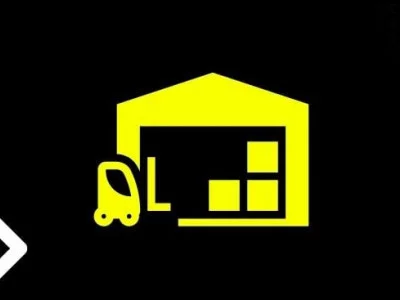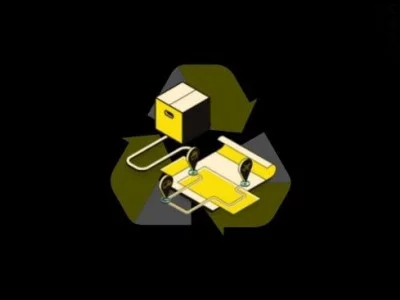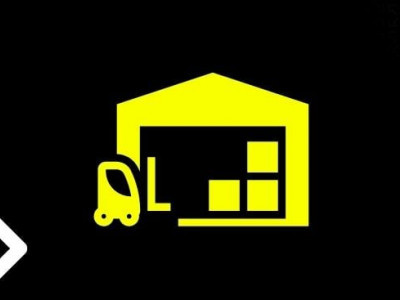Congratulations! you’ve beat the odds and made your e-commerce business one of the 10% of all startups that don’t fail. Now you’re ready to scale it to the next level.
But scaling isn’t the same as simply growing:
- Growth is when revenue and business expenses rise at a steady rate.
- Scaling is when revenue increases exponentially faster than business expenses.
If you’re like most people, you want option two. So what do you need to scale your business instead of growing it?
First of all, you’re in luck: As an established online business, you probably already have the tools you need for scaling like a good website, email lists, digital marketing practices, and more.
For the things you don’t have, this guide will help you polish your current practices so you can scale exponentially.
Read About CBIP’s E-commerce Logistics Solutions
Step 1: Understand and enhance your customer experience
Like with any brick-and-mortar store, your customers are at the heart of your e-commerce business. If their online shopping experience is a bad one, you can bet they won’t be coming back for more. Your first step in e-commerce scaling is to understand your customer experience and then use that information to improve your business.
To create a better customer experience you need to do the following:
Collect data from your customers
To understand what your customers are thinking, the easiest way is to ask them.
Consider adding the following text-box or dropdown-menu questions to your online order form:
- How did you hear about our business?
- How easy was it for you to navigate our website?
- Were you able to find all of the products you were looking for?
You can and should personalize your questions based on your business model, but stick to asking about your customer’s shopping experience for now. You can ask questions about customer satisfaction with your product later through emails or online reviews.
Speaking of online data, data collection is much easier for you as an online business. Your customers are likely already typing out personal information to place an order and likely wouldn’t mind some brief survey questions while they’re at it.
Get more reviews
It’s 2022 and the reviews are in: More than 90% of shoppers read online reviews before buying a product. Even more notably, over 60% of e-commerce consumers say they look at the number of reviews a product has before buying.
That means you should be beefing up your product reviews. Here are some quick, easy ways to incentivize customers to rate your product online:
- Offer customers discounts on future purchases if they provide an honest review
- Send reminder emails to customers asking them to rate your product online
- Give free products to influencers or repeat customers in exchange for honest reviews
RELATED: Cheat Sheet: 14 E-commerce Logistics Terms You Need to Know
Don’t be afraid to change your business
Now that you know how your customers found you, what they thought of your website, and how they felt about your product, you need to use all that information to improve your customer experience.
Did a large number of customers find you through a specific website? Use that information to form your next advertising campaign.
Did your website get complaints? Identify the problem and hire a web developer to solve it. With so many online stores to choose from, customers won’t stick around yours if your site is clunky or difficult to use.
Did you get bad product reviews? Reach out to those customers personally to see if you can help them, or improve your product to make sure issues only happen once.
Step 2: Optimize your digital resources
Collecting large amounts of data is a great way to gain resources, but to scale, you need to use it.
Naturally, your next step should be to focus on the “e” part of “e-commerce”: Your electronic resources. Whether your online presence is an Amazon store, a multi-page website, or something else, optimizing the resources you have can help you quickly improve sales for little cost.
Update your website to maximize SEO
If you want more customers, they need to be able to find you. For that to happen, you should invest in search engine optimization (SEO).
SEO is the process of optimizing your site so search engines like Google will push it towards the top of search results. Most big search engines don’t release the specifics of their search result algorithm, so it can be difficult to know exactly what steps to take for SEO. Experts generally recommend you these tips:
- Figure out the words (keywords) customers will use in their searches and use them on your site
- Make sure your website has a fast loading time
- Don’t use duplicate content within your site or from outside sources
- Change your site based on new trends in technology or search engine algorithms
If you’re not the most tech-savvy business owner, consider hiring a consultant for this step. It can make a big difference in website traction and clicks.
Optimize for smartphone shopping
In today’s e-commerce market, nearly 40% of consumers are shopping by phone.
Make sure your website is optimized for these smartphone users, not just PC shoppers. You should also consider developing a mobile app for your business, one that can send notifications and create a customized experience for each shopper.
Build your subscriber marketing list
A low-effort way to significantly increase online engagement and bring in repeat customers is by sending them consistent marketing emails. When customers purchase from you, ask for their email and whether they’d like to subscribe to marketing emails from your company.
Step 3: Prepare to Handle Logistics
Once you’ve finished the steps above, you should be ready for a sudden, sharp increase in sales volume.
If you’ve been relying on mail delivery or shipping through a provider partnered with your ecommerce platform, you may find yourself unable to keep up with orders. When that happens, you need to start looking at your logistics.
Here are three things you need to consider for your logistics:
Time: Shipping time is critical to customer satisfaction. If you promise a delivery time and your delivery comes late, that’s a negative review on your store.
Handling shipping by yourself is a huge task as a small business; You have to manage shipping times, warehouse space, last-mile delivery, customs, and more. If anything goes wrong you’ll be left scrambling.
That’s why most scaling e-commerce businesses look for a shipping partner to help them better manage orders.
Price: In logistics, prices are subject to change all the time. That can be hard to deal with if you run your logistics on your own. It’s hard enough to juggle one supply line without having to reroute over a surprise economic decline.
Many businesses work with express couriers like DHL or FedEx to simplify their processes. However, unless you’re a large business, these couriers usually cannot offer you flexible times and prices. Any sudden changes in cost will always be pushed onto you without room for negotiation.
Technology: Customers today expect to be able to see where their packages are and you should too. Better tracking on packages means better data for your business. Customers are also more lenient with delays if they can see where and why the delay happened.
Today there are a growing number of shipping businesses, warehouses, and freight forwarders incorporating tech into their business. And the more transparency you get early on, the better your business will be as it scales.
So where can you great flexibility, price, and technology from a logistics partner? A growing number of scaling e-commerce businesses are turning to fourth-party logistics (4PL) companies. These are logistics businesses that don’t own their own assets like warehouses or trucks. Instead, they can piece together a bespoke network of individual providers to create a flexible shipment plan at a reasonable price to you.
The best part? Because they don’t own their assets, they can scale your network as your business grows.
Scale with a 4PL specialized in e-commerce
Nervous about shipping all those new orders? Don’t be. CBIP Logistics is a 4PL that specializes in scaling e-commerce supply chains. We’ll work with you to create a hand-tailored logistics plan that meets all your shipping needs, no matter where you are in your scaling process.
Focusing on domestic routes? We have local carriers, warehouses, and fulfillment centers in all major markets including Southeast Asia.
Thinking about going global or expanding to new markets? At CBIP we partner with hundreds of global providers to make sure you can send your product anywhere in the world.
From warehousing to last-mile fulfillment, CBIP has the network you need so you can grow your business quickly and hassle-free. Sound like something you need? Schedule a call with our team for a commitment-free meeting about your e-commerce business and we’ll talk you into it!
Read: How to take your e-commerce business global – and succeed



